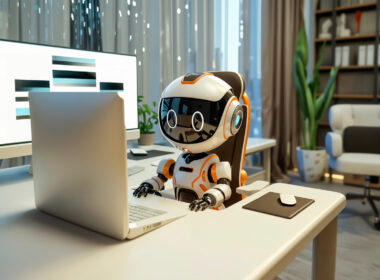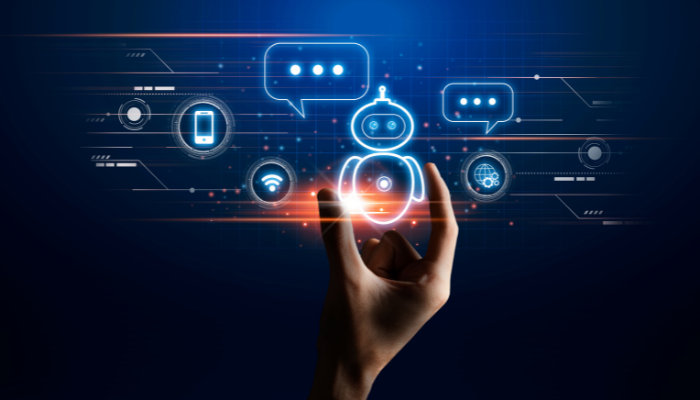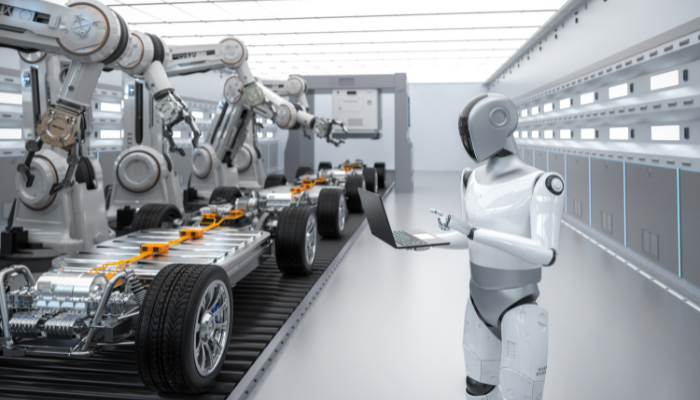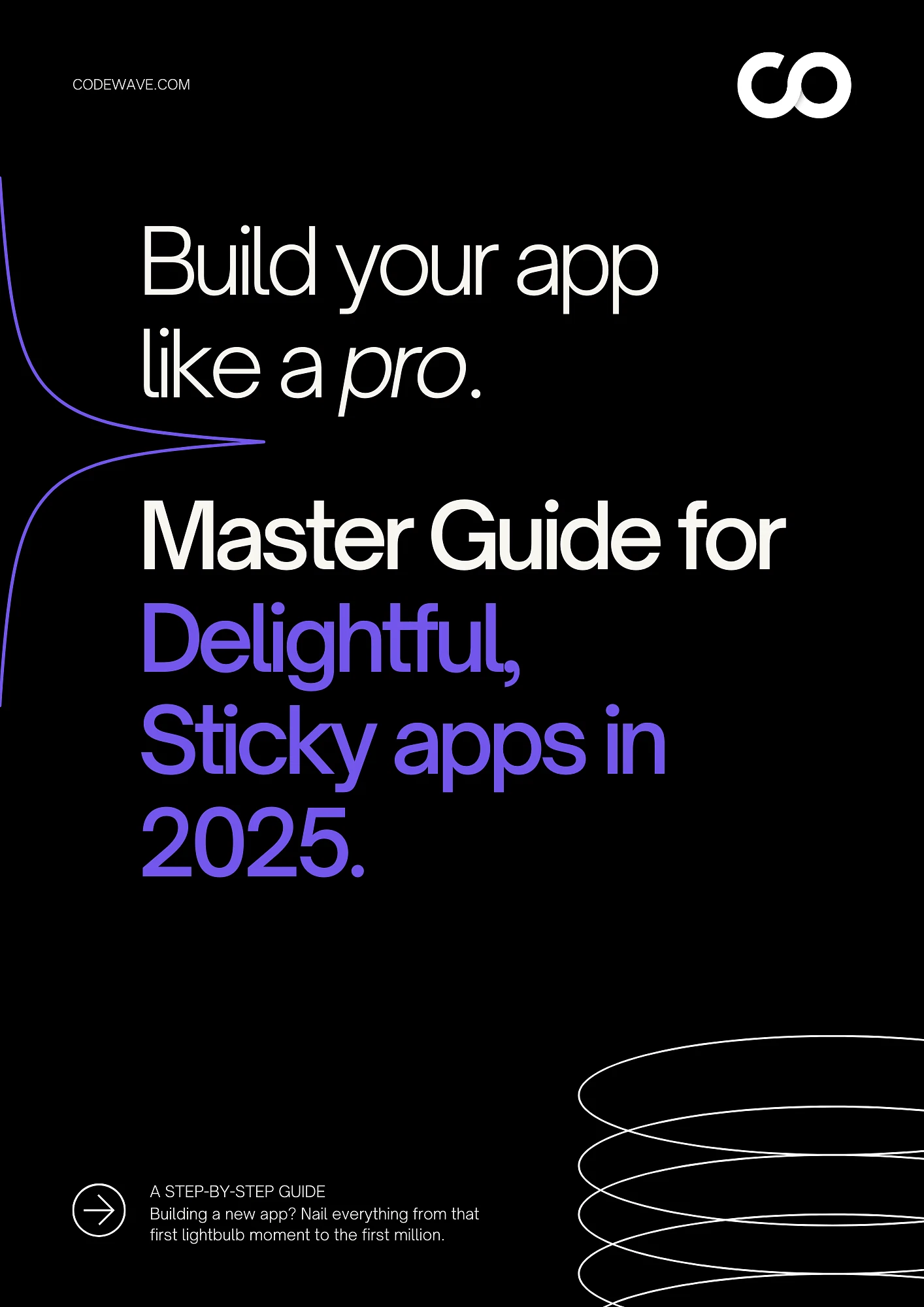What does providing exceptional customer service really mean? Is it about answering questions quickly? Or is it about ensuring customers feel heard, even when your team can’t be there 24/7?
You’re likely facing the challenge of balancing quality service with limited resources. So, how can you provide fast, accurate, and consistent support without overwhelming your team?
This is where AI chatbots come in. They allow businesses to offer immediate responses, reduce wait times, and deliver personalized experiences, around the clock. But with so many chatbot solutions out there, how do you choose the right one for your business?
Is implementing AI chatbots just a trend, or do they offer real, measurable improvements in customer satisfaction and cost-efficiency? And how can AI actually handle complex customer inquiries without losing that human touch?
In this guide, we’ll answer these questions and show you how AI chatbots can be a game-changer for customer service in 2025. Let’s begin with the basics first!
What are AI Chatbots?
You’ve probably interacted with a chatbot before, whether it was on a website, in a messaging app, or through a customer service portal. But what makes AI chatbots different from the basic ones you’re used to?
AI chatbots are powered by artificial intelligence, which means they can do much more than respond with pre-written answers. Unlike traditional chatbots that follow simple scripts, AI chatbots are equipped with machine learning and natural language processing (NLP). This allows them to understand and respond to customer inquiries in a human-like manner, adapting to different situations and improving over time.
With AI chatbots, customers can:
- Get instant answers to their questions, any time of the day.
- Have personalized conversations based on their previous interactions or purchase history.
- Solve complex queries that go beyond basic FAQs, thanks to machine learning algorithms that help the bot learn from past conversations.
AI chatbots are always learning, handling multiple conversations at once, understanding context, and even knowing when to hand over to human agents.
Also Read: Using AI to Enhance Customer Experience
Now that you understand what AI chatbots are, you might be wondering: Why should your business adopt one?
Let’s take a look at the benefits of using AI chatbots for customer service.
Benefits of Using AI Customer Service Chatbots
AI customer service chatbots can significantly improve operations, enhance customer experience, and cut costs. Here’s how:
1. 24/7 Availability: AI chatbots provide round-the-clock support, ensuring your customers always have access to answers, whether it’s late at night or during holidays. This leads to higher satisfaction and fewer missed sales opportunities.
2. Instant Response: AI chatbots eliminate long wait times, providing immediate responses to customer inquiries. This reduces frustration, speeds up resolutions, and increases customer retention.
3. Cost Savings: By automating responses to common inquiries, AI chatbots reduce the need for large support teams. They can handle multiple inquiries simultaneously, cutting operational costs while maintaining quality service.
4. Consistent and Accurate Responses: AI chatbots deliver reliable and consistent responses based on data, ensuring every customer gets the same accurate information. This boosts brand credibility and customer loyalty.
5. Personalization: AI chatbots use customer data to personalize interactions, recommend products, and offer tailored support. This enhances the customer experience and drives higher sales.
6. Scalability: AI chatbots handle increased demand efficiently, allowing businesses to scale without hiring additional agents. They maintain service quality during peak times or business expansion.
7. Data Insights: AI chatbots collect valuable data from interactions, providing insights into customer issues and trends. This helps improve customer service and informs business strategy.
Long Waits = Lost Revenue
Build AI Chatbots to Cut Response Time to 0 Seconds.
Also Read: Best Chatbot Tools to Use in 2024
Now that you know how AI chatbots can transform your customer service, you’re probably wondering, “How do I actually create one?” Well, you’re in luck. Creating an AI chatbot doesn’t have to be a daunting task. In fact, it’s easier than you think.
Let’s break it down into simple steps, so you can have your own AI-powered customer service assistant up and running in no time!
Steps to Create a Customer Service AI Chatbot
Creating a customer service chatbot might sound like a complex project, but with the right steps, it’s a manageable and highly rewarding process. Let’s walk through the key elements you need to focus on to build an AI chatbot that’s not just functional, but truly valuable for your business.
1. Define the Purpose and Scope
Before you dive into the technical side of things, take a moment to define the purpose of your AI chatbot. What do you want it to do? Will it handle basic FAQs, book appointments, track orders, or assist with complex customer inquiries? Setting clear goals for your chatbot ensures that you build it with the right focus and functionality.
Key Questions to Ask:
- What customer problems should the chatbot solve?
- What specific tasks will the chatbot handle, and what tasks will still require human assistance?
- How will the chatbot fit into your existing customer service strategy?
Having these questions answered upfront will help you design a chatbot that’s both effective and aligned with your customer service goals.
2. Choose the Right Platform and Tools
Once you’ve defined your chatbot’s purpose, it’s time to choose the right platform and tools. There are many platforms out there, like Dialogflow, Microsoft Bot Framework, and Rasa, that allow you to easily create and deploy AI chatbots. These tools come with pre-built AI models and integrations, which can help you get started quickly.
However, be sure to choose a platform that:
- Integrates well with your existing systems (e.g., CRM, helpdesk software).
- Offers customization options that fit your business needs.
- Provides scalability for future growth as your business and chatbot evolve.
If you’re unsure where to start, consulting with an expert can help you select the best platform for your specific requirements.
3. Train Your Chatbot with Real Customer Data
Now comes the fun part: training your chatbot. This step is where the magic happens, as your chatbot learns to understand customer queries and provide meaningful responses.
To train your chatbot, you’ll need real customer data. This can include past support tickets, chat logs, and common customer queries. The more diverse and comprehensive your data, the better your chatbot will understand various questions and provide accurate answers.
Key Things to Consider:
- Natural Language Processing (NLP): Ensure that your chatbot can understand different ways customers phrase their questions. This is where AI and machine learning come into play, helping the bot “learn” from each interaction.
- Response Accuracy: Fine-tune your chatbot’s responses to be clear, helpful, and aligned with your brand’s tone.
- Continuous Learning: Your chatbot will continue to improve over time, so keep training it with new data and customer feedback.
Your competitors’ chatbots are already learning from customer data. Is yours? Codewave can help you catch up fast. Talk to Our Team
4. Design a Seamless User Experience
Just like your website or mobile app, your chatbot should provide a smooth and engaging user experience. Customers don’t want to waste time navigating complicated systems, they want quick answers and easy interaction.
Here’s how you can ensure a great experience:
- Clear Communication: Use simple, conversational language. Avoid jargon, and ensure the chatbot responds in a way that feels natural to the user.
- Human Handoff: For complex issues, make sure the chatbot can easily hand over the conversation to a human agent without disrupting the flow.
- Quick Responses: Your chatbot should be able to respond quickly to customer queries, speed is key in keeping customers happy.
Designing a smooth user interface ensures that customers don’t feel frustrated when using your chatbot, improving their overall experience.
5. Test, Test, and Test Again
After building your chatbot, it’s time for rigorous testing. This step is crucial to ensure your chatbot performs as expected and is ready for real-world customer interactions.
- Beta Test with Internal Teams: Before going live, test your chatbot with employees to identify any potential issues or gaps.
- Simulate Customer Interactions: Run tests based on various customer scenarios to see how the bot responds and where it may need adjustments.
- Refine Based on Feedback: After testing, use feedback to refine your chatbot’s responses, improve its performance, and ensure it meets customer expectations.
Remember, testing is an ongoing process. Your chatbot will continue to learn and improve based on customer interactions.
6. Monitor and Optimize
After launching your chatbot, don’t just set it and forget it. Continuous monitoring and optimization are key to ensuring that your chatbot remains effective and relevant over time.
- Track Performance Metrics: Monitor how well your chatbot handles customer inquiries, including response times, customer satisfaction scores, and issue resolution rates.
- Gather Feedback: Collect feedback from customers to identify areas where the bot can improve.
- Refine and Update Regularly: Use the data collected to improve your chatbot’s knowledge base, update responses, and add new features.
Optimizing your chatbot is an ongoing effort that helps you maintain its relevance and value for both your business and your customers.
Also Read: Top Open Source Chatbot Frameworks to Use
Now that you understand the process of creating an AI chatbot, you might be wondering: What features should my chatbot have to truly stand out? After all, the best AI chatbots are not just functional, they’re smart, intuitive, and able to provide seamless customer experiences.
Let’s take a closer look at the key features that every AI customer service chatbot should have to truly shine and deliver maximum value for both your business and your customers.
Key Features of an AI Customer Service Chatbot
When it comes to creating a customer service AI chatbot, having the right features is essential. It’s not just about answering questions, it’s about providing fast, accurate, and helpful interactions that improve your customers’ experience. Let’s break down the key features that your AI chatbot should have to truly make an impact.
1. Natural Language Processing (NLP)
The ability for your chatbot to understand and process human language is critical. Natural Language Processing (NLP) allows the bot to interpret customer queries and respond in a way that feels natural, even if the user’s wording or phrasing varies.
NLP ensures that your chatbot can understand complex questions and provide relevant, human-like responses. This leads to better customer satisfaction because customers won’t feel like they’re talking to a robot, but instead, receiving support from a smart assistant.
2. Multi-Channel Support
Today’s customers expect seamless interactions across multiple platforms, whether it’s your website, mobile app, or social media channels. Your AI chatbot should be able to engage with users across these various platforms without missing a beat.
By offering multi-channel support, your chatbot can meet customers where they are, ensuring consistency and convenience. Whether customers reach out via Facebook Messenger, your website’s live chat, or WhatsApp, they’ll get the same great experience no matter the channel.
3. Personalization
Personalization is a key factor in creating a positive customer experience. AI chatbots can gather and use data from previous interactions to personalize responses, recommendations, and solutions.
Personalized responses help your chatbot feel more like a helpful assistant than a generic support tool. By using data to offer tailored suggestions and responses, your chatbot can drive higher engagement and increase conversion rates by suggesting products or services that are relevant to each customer.
4. 24/7 Availability
One of the biggest advantages of using AI in customer service is its ability to offer round-the-clock support. Unlike human agents who are limited by business hours, AI chatbots can answer customer inquiries at any time, day or night.
With 24/7 availability, your business can provide consistent support to customers no matter the time zone. This leads to improved customer satisfaction and ensures that you’re never missing out on providing essential support, even when your human agents are offline.
5. Escalation to Human Agents
While AI chatbots are incredibly powerful, there are always situations that require human intervention. An intelligent AI chatbot knows when to escalate an issue to a live agent, ensuring that customers aren’t left hanging with unsatisfactory solutions.
Having an escalation feature ensures that complex or sensitive issues are handled by a human, giving customers the best of both worlds, quick responses for simple inquiries and expert help when needed. This can increase customer loyalty and prevent frustration when a problem requires more than the chatbot can handle.
6. Learning and Improvement
AI chatbots improve over time. As they interact with more customers and gather more data, they learn from each conversation. This continuous learning enables the chatbot to get better at understanding customer queries and providing accurate responses.
The more your chatbot learns, the better it gets at serving your customers. This self-improvement leads to more accurate responses, faster resolution times, and better customer experiences overall.
7. Analytics and Reporting
To measure the effectiveness of your chatbot, you need access to data. The best AI chatbots come with built-in analytics and reporting features that provide insights into customer interactions, common issues, and chatbot performance.
Analytics help you track customer satisfaction, identify areas for improvement, and measure the overall success of your chatbot. This data is invaluable for optimizing chatbot performance and ensuring it continually adds value to your customer service strategy.
Choosing the right AI chatbot isn’t as simple as picking the most popular option on the market. For your business to truly benefit from an AI-powered customer service assistant, you need to be careful about selecting a chatbot that fits your specific needs and objectives.
Let’s break down the key factors to consider so you can confidently choose the right AI chatbot for your business.
Choosing the Perfect AI Chatbot: What You Need to Know
We’ve outlined key tips to help you choose the perfect AI chatbot for your business. From integration to scalability, we’ll cover what matters most to ensure your chatbot delivers real value and enhances your customer service.
1. Understand Your Customer Service Needs
Before you start looking at chatbots, ask yourself: What do you really need from your chatbot? Are you looking for a tool that handles basic FAQs, or do you need something more advanced that can manage complex queries and integrate with your current customer support channels?
Questions to ask:
- What are the most common questions or problems your customers need help with?
- How much of your customer service can be automated, and what still requires human intervention?
- Do you need multilingual support for global customers?
Understanding your needs helps you avoid selecting a chatbot that offers too many (or too few) features. You need a solution that will fit seamlessly into your existing support
workflow and provide real value from day one.
2. Integration with Your Existing Tools
You probably already have systems in place, whether it’s a CRM, a helpdesk platform, or a ticketing system. Your chatbot needs to work well with these tools to ensure smooth communication between your chatbot, human agents, and your customer database.
Questions to ask:
- Does the chatbot integrate with your CRM or other customer service tools?
- Can it pull information from customer profiles to provide personalized responses?
- How well does it work with your website, app, or social media channels?
Without proper integration, you risk creating a fragmented customer experience. A chatbot that integrates well with your existing systems ensures that all interactions, whether automated or human, are seamless and connected.
Also Read: Integrating LLMs in AI Chatbots: A Complete Guide
3. Customization and Flexibility
Not all businesses are the same, and neither are customer service needs. The right AI chatbot should be highly customizable, allowing you to tailor responses, workflows, and overall interactions to match your brand and customer expectations.
Questions to ask:
- Can you customize the chatbot’s responses to align with your brand’s tone and voice?
- How flexible is the chatbot in adapting to new workflows or services as your business grows?
- Can you easily update the chatbot’s knowledge base as customer inquiries evolve?
Customization ensures that the chatbot feels like a true extension of your brand and that it adapts to the specific needs of your customers. Over time, you may want to expand its capabilities, so flexibility is key to ensuring long-term value.
4. AI Capabilities and Learning Ability
The best chatbots don’t just follow scripted responses, they learn from every interaction. Your chatbot should be equipped with machine learning (ML) capabilities, allowing it to
improve over time and handle more complex customer queries.
Questions to ask:
- Does the chatbot learn from previous conversations and improve its responses over time?
- How accurate is the chatbot’s NLP (Natural Language Processing) when understanding customer queries?
- Can it recognize patterns and adapt its responses based on customer history or preferences?
A chatbot that learns from each interaction ensures that it doesn’t become obsolete as your business grows. The more intelligent your chatbot, the better it can handle a wide range of questions and situations, improving customer experience and reducing the need for human intervention.
5. Cost-Effectiveness vs. Value
While it’s tempting to choose the most affordable option, it’s important to assess the value that the chatbot brings to your business. A low-cost chatbot might save you money upfront but could fall short in terms of features, scalability, and long-term results.
Questions to ask:
- What’s the total cost of ownership (including setup, integration, and ongoing maintenance)?
- Does the chatbot offer the features that will provide the most value for your business (e.g., AI-driven insights, multi-channel support, etc.)?
- Can it scale as your business and customer support needs grow?
You want a solution that delivers the best ROI. A more expensive but feature-rich chatbot may save you money in the long run by handling more tasks and improving customer satisfaction, while a cheap option might require constant troubleshooting or a future upgrade.
6. User Experience (UX)
The last thing you want is for your customers to get frustrated by a chatbot that’s difficult to use or understand. The user experience should be simple, intuitive, and engaging.
Questions to ask:
- Is the chatbot easy for customers to interact with?
- Does it respond quickly and accurately to a wide range of queries?
- How does it handle mistakes or misunderstandings in a way that doesn’t frustrate the customer?
The user experience directly impacts customer satisfaction. A smooth, engaging experience ensures that customers feel heard and valued, while poor UX can lead to frustration, dropped conversations, and negative reviews.
Remember the key features we just discussed, personalization, multi-channel support, and smart NLP? Well, these aren’t just nice-to-haves, they’re essential for delivering the type of customer service that today’s consumers expect.
But here’s the thing: picking a chatbot with all these features can be overwhelming, especially when you don’t know where to start or how to prioritize.
That’s where having the right expert guidance becomes a game changer. Building a chatbot that truly stands out and meets all your customer service goals isn’t something you can do alone or at least, not without the right team backing you up.
How Codewave Powers Your AI Chatbot Success
When it comes to creating a customer service AI chatbot that actually works, you want a partner who understands the nuances of AI technology and customer experience. At Codewave, we bring a unique combination of technical expertise, industry experience, and a customer-first approach that makes all the difference.
1. Expertise in AI & Machine Learning
We don’t just build basic chatbots, we create smart AI-driven solutions. With our expertise in machine learning (ML) and natural language processing (NLP), we design chatbots that understand your customers’ needs, handle complex queries, and improve with every conversation. This means your chatbot gets smarter and more efficient over time.
2. Different Types of Chatbots We Build
At Codewave, we don’t believe in a one-size-fits-all approach. We specialize in building different types of AI chatbots based on your business needs:
- Rule-Based Chatbots: These are perfect for simple, structured tasks, like answering frequently asked questions, booking appointments, or guiding users through specific workflows.
- AI-Powered Chatbots: These use machine learning to handle more complex, conversational inquiries. They adapt based on past interactions and are great for providing personalized responses.
- Hybrid Chatbots: A mix of rule-based and AI-powered, hybrid chatbots can handle both simple and complex queries, making them perfect for businesses looking for flexibility and scalability.
3. Seamless Integration with Your Systems
An AI chatbot is only as good as how well it integrates with your current tools. Whether it’s your CRM, helpdesk platform, or e-commerce system, we ensure smooth integration so your chatbot works effortlessly with your existing infrastructure. We handle the technical details, so you don’t have to.
4. Ongoing Support and Optimization
AI chatbots require continuous care and improvement. We don’t stop after deployment, Codewave offers ongoing support to ensure your chatbot stays up-to-date, efficient, and aligned with your evolving business needs. Whether it’s adding new features or fine-tuning responses, we’re here for the long haul.
Conclusion: Make the Right Choice for Your Business
Choosing the right AI chatbot isn’t just about picking the one with the most features, it’s about finding the solution that best fits your business needs, integrates smoothly with your existing systems, and provides measurable value over time.
By carefully evaluating the features that matter most to you, considering your customer service goals, and aligning them with the right chatbot platform, you can make an informed decision that will improve your customer experience and support team efficiency.
Ready to take the next step? Reach out to Codewave, and let us help you choose and implement the perfect AI chatbot for your customer service strategy.
Never miss a customer query again. Deploy an AI chatbot today.
Codewave is a UX first design thinking & digital transformation services company, designing & engineering innovative mobile apps, cloud, & edge solutions.







